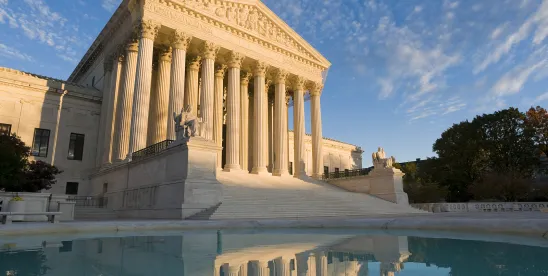In April, we patiently waited on the Supreme Court to rule on Ames v. Ohio. On June 5, 2025, in a unanimous decision the Court ruled that members of majority groups do not need to show “background circumstances” to prove “reverse racism”. This standard that was split among several circuits, now provides a clear rule for claims as the one in Ames. This decision reverses the 6th Circuit decision that required, Ames, a heterosexual woman to show an additional factor when proving she faced workplace discrimination. The Supreme Court held that there would be no additional requirement for people alleging workplace discrimination due to their membership in a majority group.
Background Circumstances and the Split
In the context of reverse discrimination, background circumstances refer to specific evidence or appropriate factors that support the suggestion that an employer discriminates against majority-group members. This includes, but is not limited to, past instances where the employer has shown a pattern of discriminating against majority-group members; official policies or statements that indicate a preference for minority-group members over majority-group members; or statistical evidence showing a significant disparity in the treatment of majority-group members compared to minority-group members. The concern with the background circumstances standard is that the burden only applied to so-called majority groups, whereas so-called minority groups do not need to meet that burden.
Prior to the Ames decision circuits were split on the issue. Seven circuits in total previously required background circumstances for plaintiffs alleging discrimination against their majority group status while the others dealt with background circumstances on a case-by-case basis.
SCOTUS Ruling
The Court ruled that the background circumstances standard could not be required in reverse discrimination cases. They reasoned that Congress did not leave room for judicially created rules that added additional burdens to parties not in historically discriminated against classes in Title VII. Additionally, the Court emphasized that the McDonnel Douglas standard allows for a flexible approach to cases, which is preferable to accommodate individual cases, and that the background circumstances requirement undermines the intent of the law. This means that plaintiffs from majority groups will not need to show a pattern of discrimination in addition to proving a prima facie case to meet their initial burden in bringing a claim. In a concurrence Justice Thomas suggested that the McDonnell-Douglas standard itself needs to be reconsidered to comply with Title VII’s language, though this is not binding law, it indicates how some Justices feel reversing the 6th circuit decision is not enough, and that in the future the court should go farther. The Ames case itself has been remanded, and a lower court will decide the outcome of the matter, using the Supreme Courts’ revied framework, to determine if Ames faced discrimination due to her gender.
Impact of the SCOTUS Ruling
Now that the Supreme Court decided that background circumstances are no longer required, we may see an increase in reverse discrimination cases, especially in the circuits that had no clear line on background circumstances. Going forward, employers should be mindful of such practices in hiring and firing. This ruling comes as no surprise given the recent ruling by the Supreme Court, which eliminated affirmative action in college admissions, the Trump Administration’s dismantling of DEI programs, and a rule that appeared not to apply equally to aggrieved parties.
Elizabeth Wear contributed to this article




 />i
/>i
